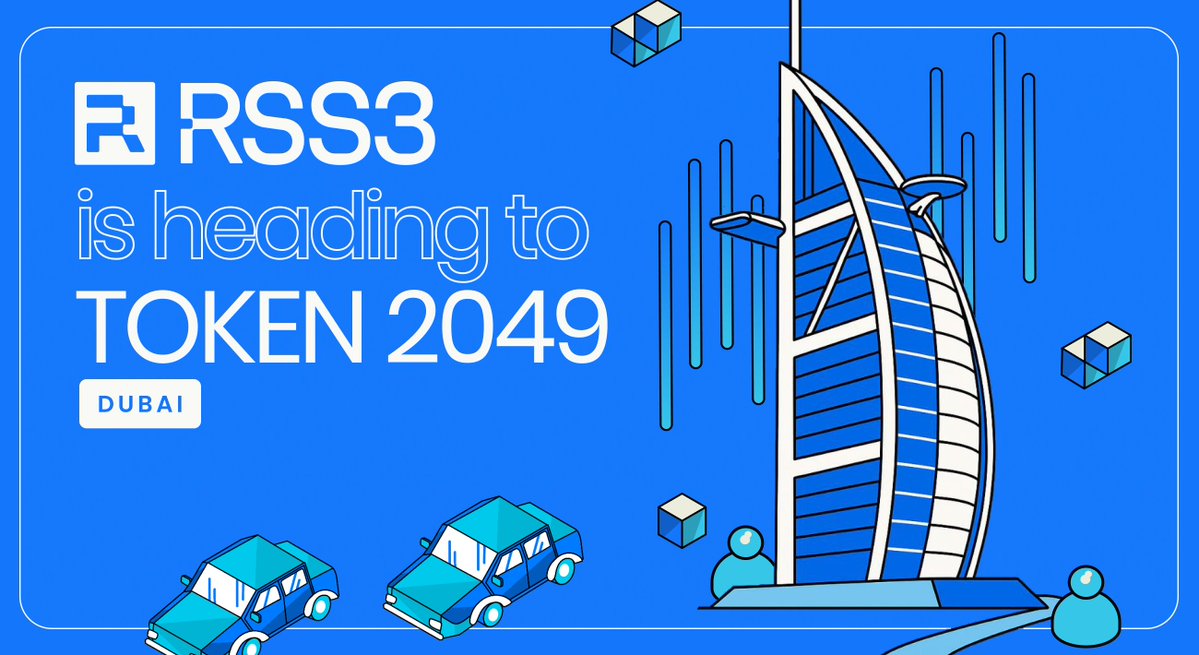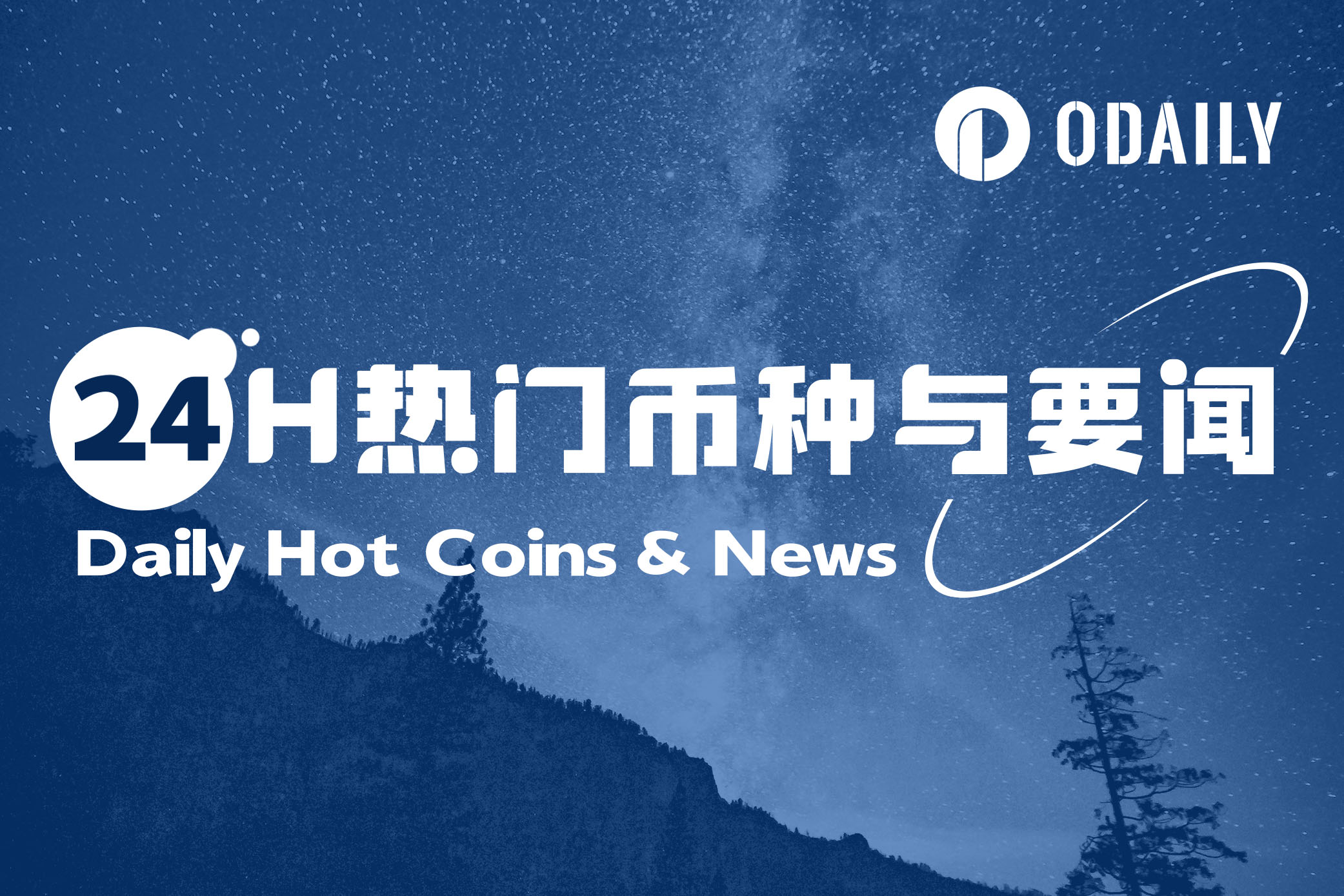1. Popular CEX currencies
Top 10 and 24-hour changes in CEX turnover:
BTC: + 1.45%
ETH: -2.10%
SOL: -1.95%
XRP: -0.90%
SUI: + 2.58%
PEPE: + 1.54%
DOGE: + 0.95%
MAGIC: + 26.19%
OM: -4.43%
TRX: + 0.20%
24 H gainers list (data source OKX):
PIXEL:+ 47.24%
MAGIC:+ 22.27%
ACE:+ 20.37%
RSS3:+ 20.26%
TNSR:+ 17.66%
BADGER:+ 13.61%
OL:+ 13.28%
PARTI:+ 11.10%
BABY:+ 10.56%
GALFT:+ 10.03%
2. Top 5 popular memes on the chain (data source is GMGN):
SAMMY
Francis
Sol
HUGGY
WORK
3. 24 H hot search currency
HUGGY, a concept token related to Hugging Face, a well-known open-source platform for artificial intelligence, was created after developer Daniel Vila Suero saw the success of the DARK token and related projects.
Headlines
TRUMP: Many are calling for precautionary rate cuts
Trump said many are calling for precautionary rate cuts, and unless interest rates are lowered, economic growth is likely to slow and inflation is almost non-existent. Calling on Powell to lower interest rates, Powell is always too late, except during the election period.
Paul Atkins was inaugurated as Chairman of the SEC in the United States
According to official sources, the U.S. Securities and Exchange Commission (SEC) announced that Paul Atkins has been officially sworn in as the 34th chairman of the SEC.
Previously, the U.S. Senate confirmed Paul Atkins as chairman of the U.S. Securities and Exchange Commission (SEC) by a vote of 52 to 44 on April 9.
Strategy increased its holdings of 6, 556 BTC at an average price of $84, 785
According to market news: Strategy (formerly MicroStrategy) disclosed that it had increased its holdings of 6,556 BTC at an average price of $84,785 between April 14 and April 20.
Paradigm is suspected of selling ETH again, transferring 5, 500 ETH to Anchorage 3 hours ago
According to Ember Monitoring, crypto venture capital firm Paradigm may transfer 5, 500 ETH (about $8.66 million) to the institutional brokerage platform Anchorage about 3 hours ago, suspected to be preparing for a sale.
According to the data, Paradigm has transferred a total of 96, 955 ETH (about $302 million) to Anchorage in the past year, with an average transfer price of about $3, 110. Historical transfer records show that these ETH usually flow further from Anchorage to centralized exchanges such as Coinbase, Binance, etc.
Industry news
This year, more than 70 U.S. crypto ETFs are waiting for the SEC's ruling, covering mainstream coins to meme coins
Bloomberg analyst Eric Balchunas said that there will be more than 70 crypto ETFs awaiting SEC review this year, covering a variety of assets such as XRP, LTC, SOL, Dogecoin, and crypto derivatives. He called "2025 going to be a crazy year".
Despite the increased institutional interest in the crypto market, the analysis points out that approval does not mean that it will be widely adopted, especially for ETFs related to non-mainstream currencies.
Sygnum Bank expects altcoin ETF inflows to be in the hundreds of millions to $1 billion, far below the spot Bitcoin ETF's ability to absorb more than $100 billion last year.
In addition, ARK Invest added staked Solana to its two ETFs on April 21, giving US investors access to spot SOL through ETFs for the first time.
ZKsync Update Security Incident Progress: Investigation is ongoing, and efforts are underway to achieve decentralized ordering and fund recovery
ZKsync posted an update on the security incident on Platform X, stating that this incident was caused by the theft of the airdrop management key, which was included in three specific Merkle distribution contracts for the June 2024 ZK token issuance. Since the total issuance cap for each distribution contract has been fully minted, it is not possible to mint additional ZK tokens from any distribution contract. No further attacks can be carried out through this method. The stolen admin key has no control over any other contract and cannot do anything other than mint unclaimed tokens from the airdrop after the claim window ends.
Matter Labs is currently the only sequencer for the ZKsync Era chain and has implemented transaction filtering for compromised accounts. Unable to cope with all potential events involving a single smart contract, Matter Labs is working to upgrade ZKsync to Phase 1 and enable decentralized ordering, while ZKsync Era is currently in Phase 1 Rollup status, and it is important to emphasize that the ZKsync Governance and Security Committee has the right to change sequencers and remove all filters at any time. The investigation is still ongoing, and active efforts are underway to recover funds.
The Grayscale Decentralized AI Fund is now open to qualified accredited investors
Grayscale announced that its Grayscale decentralized AI fund is now open to qualified qualified investors, and through fund holdings, it can obtain diversified investments in the intersection of AI and cryptocurrency, including: NEAR, TAO, RENDER, FIL, GRT, LPT.
Circle and BitGo plan to introduce cryptocurrencies to the banking industry
Circle and BitGo are working to embed themselves in the U.S. banking system by applying for a banking license, with the aim of strengthening ties to traditional finance. After returning to the White House, Trump eased restrictions that previously required banks to obtain approval before working with crypto firms, opening up new opportunities for crypto firms. Companies such as Circle and BitGo are looking to secure a full-fledged banking franchise, with plans to offer deposit and loan services like traditional banks. At the same time, traditional banks such as Bank of America and U.S. Bancorp are also reconsidering their foray into crypto. Stablecoins in the crypto industry remain central, with Tether and Circle's USD Coin continuing to dominate the market.
Deutsche Bank and Standard Chartered Bank plan to expand their cryptocurrency business in the United States
According to BitcoinMagazine, Deutsche Bank and Standard Chartered are looking to expand their cryptocurrency operations in the United States.
Project highlights
Hyperlane: Airdrop claims will open at 8 p.m. tonight
The Hyperlane Foundation has officially announced that airdrop claims will open on April 22 at 12:00 UTC (8:00 p.m. Beijing time) and last until 13:00 on May 22.
Binance Wallet will soon be available on Hyperlane's exclusive TGE, which requires a minimum of $20 in Binance Alpha to be validly purchased
Binance Wallet announced the upcoming launch of Hyperlane's exclusive TGE on Platform X from 9:00 AM - 11:00 AM (UTC) on April 22, with the rule that a valid purchase of at least $20 worth of Binance Alpha tokens must be completed between 00:00:00 UTC on March 22, 2025 and 23:59:59 UTC on April 20, 2025 via Binance Wallet (no key) or Binance exchange.
Initia unveils tokenomics: total supply of 1 billion, airdrop accounts for 5%
Initia, a full-chain rollup L1 network, unveils its tokenomics. The total supply of Initia's native token, INIT, is fixed at 1 billion, with 5% going to airdrops. In addition, foundations account for 7.75%, protocol developers account for 15%, and protocol sales account for 15.25%.
Sign Unveils Tokenomics: Total Supply of 10 Billion Tokens, 12% of Initial Circulating Supply
The official release of Sign said that the SIGN token will be minted on the Ethereum mainnet and distributed through BNB Chain and Base, with a total supply of 10 billion, with 12% of the initial circulation, and the distribution ratio is as follows: 40% – Community Incentives, 20% – Supporters, 10% – Early Team Members, 20% – Foundation, 10% – Ecosystem, 12% – Core Contributors, 3.5% – Liquidity Incentives, 2% – Compliance Budget, 2% – Operating Budget, 0.5% – Donations.
Circle will launch a cross-border payment network to challenge Visa and MasterCard
Stablecoin giant Circle will launch a new payment and cross-border remittance product at its World Trade Center headquarters in New York on Tuesday. The product is billed as Circle's "next step" and is targeted at banks, payment institutions, fintech companies, and USDC partners.
Circle is the issuer of USDC, which currently has a market capitalization of about $60 billion. The new network will initially focus on cross-border remittances, and in the future, it may challenge traditional giants Visa and MasterCard. According to people familiar with the matter, Circle is working to return to its payments roots in order to expand the use of stablecoins in the global payments space.
Against the backdrop of clarifying stablecoin regulation, Circle is also planning to go public in the United States, but has postponed its IPO due to market volatility. The industry believes that as stablecoins such as USDC and USDT are widely used for cross-border transfers, Circle's move may accelerate the process of replacing stablecoins with traditional payment systems.
Kado Software, a Web3 payment infrastructure company, was acquired by Swapped.com
Web3 payments infrastructure company Kado Software announced it had been acquired by Swapped.com, and the team declined to disclose the amount and terms of the deal, but plans to expand the US presence of Danish company Swapped.com. It is reported that Kado founder Emery Andrew will remain in his position and will be responsible for the US business and product expansion, and is already working on some products, but is not ready to go public.
Mantra (OM) founder John Patrick Mullin will burn its allocated 150 million team tokens
According to official information, Mantra founder and CEO John Patrick Mullin will burn the 150 million team tokens it allotted, and this burn is a promise made by MANTRA to the community last week. THE BURN AIMS TO REBUILD TRUST AND DEMONSTRATES MANTRA'S ONGOING COMMITMENT TO BUILDING A TRUSTED, ACCESSIBLE, AND INCLUSIVE FINANCIAL ECOSYSTEM THROUGH TOKENIZATION. It is reported that the token unstaking period will end on April 29, 2025, and after the unstaking is released, all tokens will be sent directly to the burning address.
In addition, MANTRA is in ongoing communication with key ecosystem partners and plans to burn an additional 150 million OM tokens, bringing the total burned to 300 million.
Investment and financing
GSR made a $100 million private equity investment in publicly traded Upexi to support the development of Solana's financial strategy
GSR officially announced a $100 million private equity investment in NASDAQ-listed Upexi, Inc., a brand owner focused on the development, manufacturing, and distribution of consumer products. The investment follows Upexi's announcement of a strategic shift to a cryptocurrency-based financial strategy aimed at generating long-term value and benefits for shareholders. It is reported that Upexi has committed to develop Solana's financial strategy, which includes Solana's increased holdings and staking.
Consciousness, an AI healing platform for mind, body and soul, has received a multi-million dollar strategic investment from Castrum Capital, a full-stack venture capital firm in Turkey
Consciousness, an AI healing platform for mind, body and soul, has received a multi-million dollar strategic investment from Castrum Capital, a full-stack venture capital firm in Turkey. It is reported that Consciousness is committed to integrating AI technology and Web3 architecture, promoting global community interaction and the spread of physical and mental health awareness through incentive mechanisms, and creating personalized AI healing companions and related tools.
Decentralized AI platform ORO AI closed a $6 million seed round led by a16z CSX and Delphi Ventures
According to official information, decentralized AI platform ORO AI announced the completion of a $6 million seed round led by a16z Crypto Startup Accelerator (CSX) and Delphi Ventures, with participation from Ocular VC, Orange DAO, NEAR Protocol and 0G Labs.
According to reports, ORO is a decentralized AI platform that aims to unlock high-quality, private data for advanced AI models. ORO leverages blockchain technology to facilitate secure and permissioned data sharing, enabling AI developers to train models on quality datasets while protecting data privacy.
Character voices
TD Cowen: Strategy's purchase of BTC has minimal impact on the price of the coin
Investment bank TD Cowen released a research note noting that despite Strategy's growing influence as a major corporate holder of Bitcoin (BTC), its large-scale crypto purchases appear to have little impact on its price, which are a drop in the bucket compared to the broader Bitcoin market.
The analysis found that Strategy's Bitcoin purchases typically account for only 3.3% of weekly trading volume. Over the past 27 weeks, the company's total trading volume has accounted for 8.4% of trading volume, but this figure has been skewed by a few weeks when buying volume briefly spiked by more than 20%. For eight weeks, Strategy didn't buy any Bitcoin at all.
ZachXBT: Why does the ZORA token need to exist if it has no use
On-chain detective ZachXBT posted on Platform X that he suspected of questioning the economic model of the Zora token, saying: "If ZORA has no use, then why does it need to exist? For a project that has raised more than $60 million in total and is valued at $600 million, this is an awkward situation. ”
Binance CEO: Countries that are the first to adopt blockchain will have multiple advantages
Binance CEO Richard Teng said that forward-thinking countries that are the first to adopt blockchain will receive cheaper capital, attract technologically advanced investors, and build resilient digital infrastructure, while other countries will pay extra to catch up.
Analysts: M2 money supply growth could push Bitcoin to $132,000 by the end of the year
Jamie Coutts, chief cryptocurrency analyst at Real Vision, said that the growing money supply could push the price of Bitcoin above $132, 000 by the end of the year. For the first time in nearly three weeks, the price of Bitcoin briefly topped $87, 700 since U.S. President Donald Trump announced reciprocal import tariffs on April 2. André Dragosch, head of European research at Bitwise, said: "It looks like Bitcoin is rising on the continued weakness of the US dollar, which has just hit its lowest level since March 2022. Ryan Lee, principal analyst at Bitget Research, told Cointelegraph that a weaker dollar could strengthen Bitcoin's appeal as a safe-haven asset.
Michael Saylor: Strategy Bitcoin yields 12.1% year-to-date in 2025
Michael Saylor, founder of Strategy (formerly MicroStrategy), said in a post that he had acquired 6,556 BTC for about $555.8 million, or about $84, 785 per bitcoin, and had achieved a 12.1% yield on bitcoin so far in 2025. As of April 20, 2025, Strategy holds 538, 200 BTC.
Show original































Socials